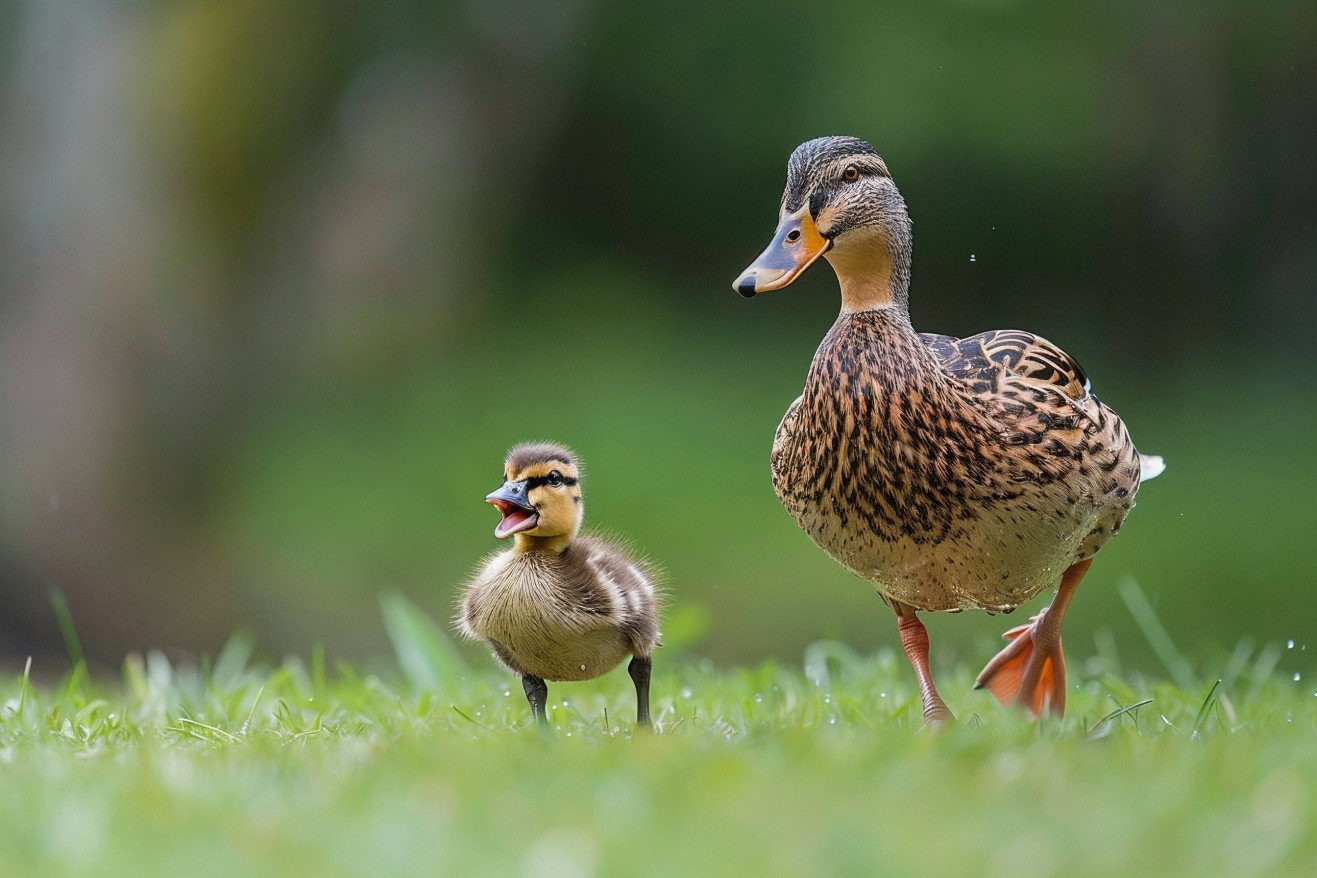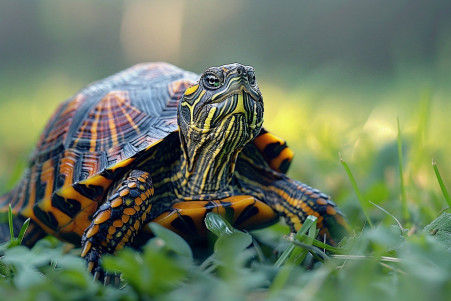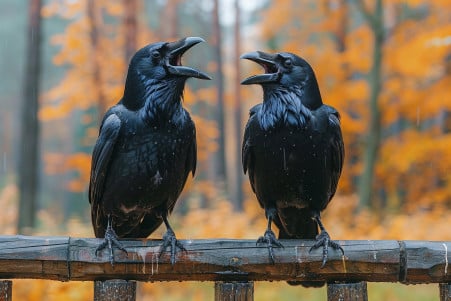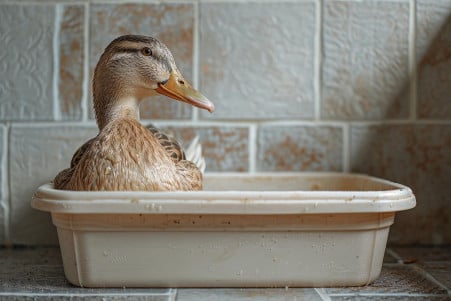The Quacky Truth: What Duck Sounds Mean
9 May 2024 • Updated 9 May 2024

While that "quack quack" is the quintessential duck sound, these beloved waterfowl actually have a surprisingly varied repertoire of vocalizations. Ducks make a variety of quacking, grunting and whistling noises to communicate with their flock and mates. The sounds differ based on the duck's age, gender, species and mood.
We'll uncover the fascinating findings from biologists and ornithologists who have studied the intriguing linguistics of these webbed wonders. By examining the purposes behind ducks' distinct calls, we'll gain insight into their social behaviors, survival adaptations and even their emotional states. This research exemplifies the remarkable depth of communication occurring in the natural world, even from our unassuming feathered friends.
What sound does a duck make?
Mallard Ducks
The mallard duck is one of the most common duck species in North America, and its vocalizations are just as varied as its range. The classic quacking sound made by female mallards is used to attract mates, establish nesting territories, and keep track of ducklings, according to scientists at the Cornell Lab of Ornithology.
In contrast to the loud, persistent quacks made by females, male mallards make a softer, raspier sound by rubbing their feathers together, which they often do to show off for females, according to researchers at Binghamton University. When newly hatched ducklings are disturbed, they emit soft, high-pitched whistles that help their mother find and protect them.
These different sounds show how mallard ducks use their vocalizations to help them with important social activities like mating, nesting, and protecting their young. The variety of sounds that come from this one species is a great example of how complex duck language can be. It also shows how studying the different calls that mallards make can help scientists learn more about the communication and survival needs of these adaptable birds.
The Vocal Anatomy: How Ducks Make Sounds
Unlike humans, ducks don't have vocal cords. Instead, they have a syrinx, a vocal organ unique to birds. The syrinx is located at the base of the trachea and contains vibrating membranes that make noise when air passes over them. The tension and vibration of these membranes are controlled by muscles, which allows ducks to make different sounds.
One interesting thing to note is that the syrinx of male and female ducks is different in terms of its anatomy. According to the Wikipedia page on the syrinx, male ducks have a larger tracheal bulla and thicker tracheal rings than female ducks. In addition, the tympaniform membranes are more developed in males, which leads to the lower-pitched, less complex sounds they make, while the louder, more complex sounds of females are the result of the more developed tympaniform membranes in their syrinxes.
The syrinx is thought to have evolved from the larynx of reptilian ancestors and become specialized for sound production, according to a study on the identity and novelty of the avian syrinx. This evolutionary change is what made the vocal diversity of the duck species possible.
Vocal Learning: How Ducklings Learn to Quack
Ducklings can hear their mother's calls even before they hatch, which enables them to start vocalizing and coordinate their hatching, according to Ducks Unlimited research on waterfowl vocalizations. Once they've hatched, it's important that ducklings can identify their mother's calls so they can follow her and maintain their family group.
The Australian musk duck (Biziura lobata) is one of the few waterfowl species that can imitate sounds outside of its natural vocal range. In fact, musk ducks in captivity have been recorded imitating human speech, which is a sign of sophisticated vocal learning, according to a study in the Philosophical Transactions of the Royal Society B. This unusual ability suggests that vocal learning in ducks may have evolved to help them communicate more effectively and improve their chances of survival.
Even though most waterfowl can't imitate sounds, the musk duck's vocal learning skills show how complex duck communication can be and suggest that other duck species may also be capable of vocal learning. Learning how ducklings learn their calls can help provide important insights into how this behavior has evolved.
Call Comparisons: Ducks vs. Geese and Swans
While ducks and geese are both part of the waterfowl family, there are several differences in the calls of these two groups. Geese are known for their loud, honking calls, while ducks are known for their softer quacks and whistles, according to Understanding Waterfowl: Science and Duck Calling from Ducks Unlimited. Meanwhile, swans, which are also part of the waterfowl family, are known for being less vocal, but they can produce a range of grunting and hissing sounds.
One exception to the typical calls of waterfowl is the Australian musk duck (Biziura lobata), which is known for its ability to imitate sounds, according to the study on vocal imitations and production learning by this species. This suggests that the musk duck’s vocal learning and imitation abilities have evolved differently than those of other waterfowl species.
These differences in vocalizations are likely due to differences in the behavior, environment, and communication needs of the various waterfowl species. Knowing the differences between the calls of ducks, geese, and swans helps to illustrate the different ways that waterfowl have adapted and communicate within the family.
Perfecting the Duck Call: Advice for Hunters
Duck hunters rely on realistic duck calls to lure waterfowl during hunting season. Scientists at Mississippi State University have studied the acoustic properties of duck calls to find the most realistic-sounding options. Their research published by the Acoustical Society of America found that calls made from denser materials like cocobolo wood and double-reed calls most closely matched natural duck vocalizations.
Knowing the different types of duck calls and when to use them can help hunters be more successful. For example, as outlined in research from Ducks Unlimited, the female mallard's "decrescendo" call is one of the most commonly used by waterfowl hunters. Meanwhile, proper duck-calling technique, including adjusting the rhythm and volume of the calls, is also important for calling ducks in a way that will attract them.
Conclusion: The Surprisingly Complex Language of Ducks
In fact, mallards have a vocabulary of over 200 different calls, as noted in the blog "Learning Duck Language with Pumpjack & Piddlewick." These calls are used to express everything from happiness and contentment to danger and warning.
For example, the high-pitched "POOP!" call is a warning call that tells the rest of the flock to take cover. The low-pitched "pup, pup, pup" call, which is often accompanied by a head tilt, is used to warn other ducks about potential threats from the sky, such as predators. There's even a "little trill" call that's used to get the attention of other ducks and a "laughing" call that's used to express happiness.
In fact, when ducks are happy, they make a "buh, buh, buh, badda, buh" call. And mother ducks use a "quiet trill" call to communicate with their eggs and a high-pitched call to keep their brood together. Even courtship is communicated through calls, with female ducks using a staccato call and head movement to let males know they're interested.
This extensive vocabulary demonstrates the depth of duck communication and the importance of vocalizations in their social behaviors and survival. It also shows how complex and adaptive ducks are. Understanding duck calls can help researchers better understand these birds' cognitive and adaptive abilities.


